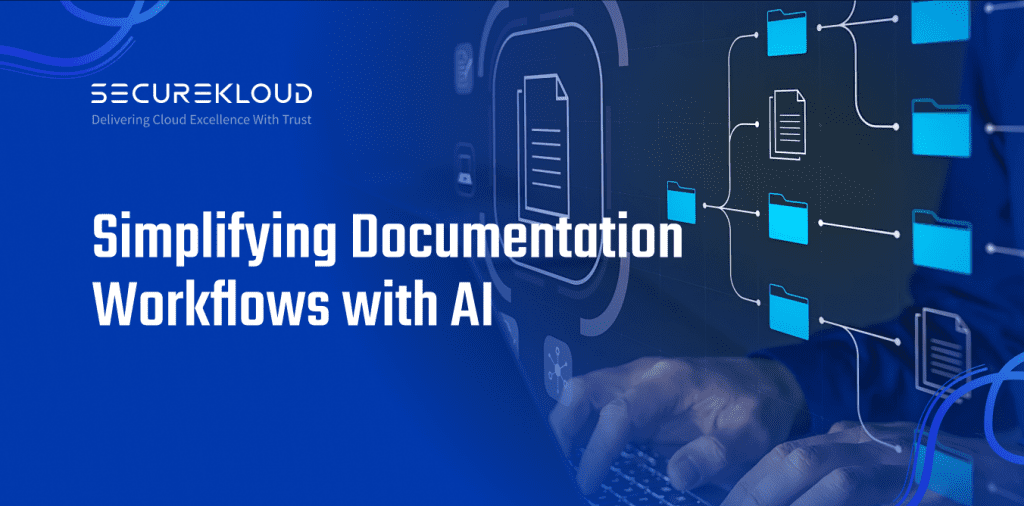- 3Minutes
- 615Words
- 89Views
In today’s fast-paced business environment, effective documentation is essential for ensuring smooth operations, compliance, and communication. However, traditional documentation workflows can be time-consuming, prone to errors, and difficult to manage, especially as organizations scale.
With AI-powered documentation solutions, businesses can automate and streamline these workflows, significantly improving productivity and reducing operational inefficiencies. In this blog, we’ll explore how AI can transform documentation processes, making them more efficient and less prone to human error.
Understanding AI-Powered Documentation
AI-powered documentation refers to the use of artificial intelligence technologies to automate and enhance various aspects of document creation, management, and processing. These solutions leverage machine learning, natural language processing (NLP), and other AI capabilities to enable smarter, faster, and more accurate documentation practices.
Automated workflows powered by AI are designed to handle repetitive tasks such as data entry, document categorization, content extraction, and even document drafting. By removing manual steps, organizations can free up their teams to focus on more strategic tasks, improving overall productivity.
The Benefits of Automated Documentation Workflows
Implementing AI-driven document management systems offers numerous advantages for businesses. Let’s explore the key benefits:
- Increased Efficiency: Automated workflows powered by AI can significantly reduce the time spent on repetitive tasks such as data entry and document routing. AI can also help process large volumes of documents quickly, ensuring that the right information is available when needed.
- Improved Accuracy: Human error can result in inaccurate data entry or misfiled documents, leading to inefficiencies and potential compliance issues. AI systems can ensure data consistency and accuracy by eliminating the risk of manual errors in document handling.
- Streamlined Document Management: AI-driven document management systems can automatically categorize, tag, and index documents, making it easier to search and retrieve them. This saves time and ensures that the right document is always accessible to the right person at the right time.
- Enhanced Collaboration: With AI handling the repetitive tasks of document management, team members can collaborate more effectively. AI systems can also analyze content, suggest improvements, and ensure compliance, further enhancing team output.
- Cost Savings: Reducing manual documentation processes means fewer hours spent on administrative tasks, leading to significant cost savings. AI-powered solutions also lower the risk of costly errors and compliance failures.
Best Practices for Implementing AI in Documentation Workflows
To ensure the successful adoption of AI in documentation workflows, businesses should follow these best practices:
- Identify Repetitive Tasks: Start by pinpointing areas of your documentation process that can be automated. Tasks like data entry, categorization, and document review are ideal candidates for AI-driven automation.
- Choose the Right AI Tools: Not all AI-powered documentation tools are created equal. Ensure the solutions you choose align with your business needs and can integrate seamlessly with your existing systems.
- Train Your Team: It’s essential to provide training for your team on how to use AI-powered documentation systems effectively. This will help ensure smooth adoption and maximize the benefits of automation.
- Monitor and Optimize: Continuously monitor AI-driven workflows to identify areas for improvement. As AI technology evolves, make sure to update your tools and processes to take full advantage of new capabilities.
AI-powered documentation and automated workflows are transforming the way businesses handle their documentation processes. By streamlining document management, reducing errors, and increasing efficiency, AI solutions offer significant benefits that can drive productivity and save costs. As more businesses adopt these technologies, the future of documentation will be faster, smarter, and more reliable.



